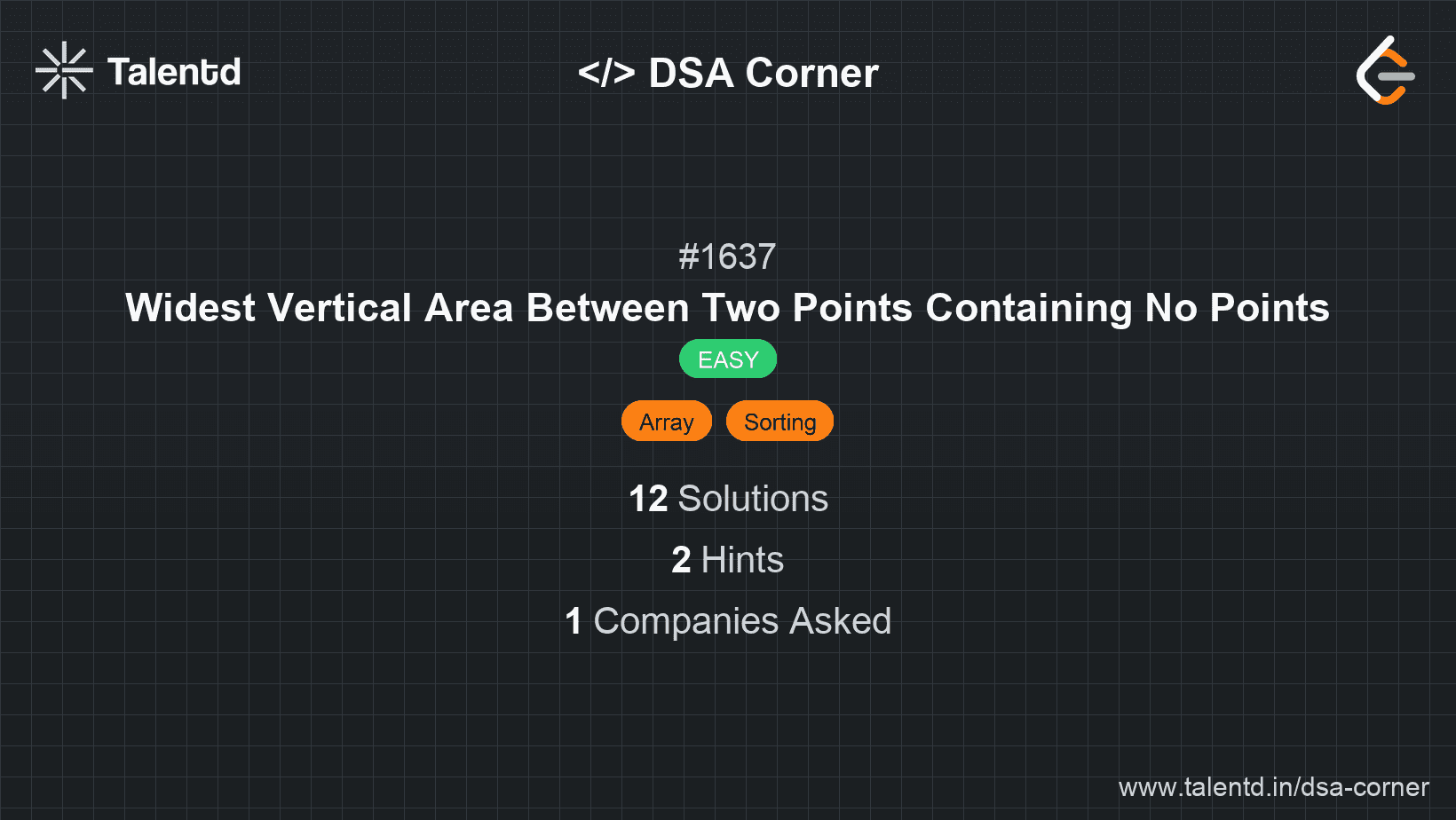
Sponsored
Sponsored
This approach involves sorting the x-coordinates of the points and then finding the maximum difference between consecutive sorted x-coordinates. This difference gives the widest vertical area between any two points.
Time Complexity: O(n log n), due to the sorting step.
Space Complexity: O(n), due to the additional array holding the sorted x-coordinates.
1def maxWidthOfVerticalArea(points):
2 x_coords = [point[0] for point in points]
3 x_coords.sort()
4 max_width = 0
5 for i in range(1, len(x_coords)):
6 max_width = max(max_width, x_coords[i] - x_coords[i - 1])
7 return max_width
8
9if __name__ == "__main__":
10 points = [[3, 1], [9, 0], [1, 0], [1, 4], [5, 3], [8, 8]]
11 print(maxWidthOfVerticalArea(points))In Python, list comprehensions efficiently extract x-coordinates, which are then sorted. The maximum gap is calculated using a simple iterative loop.
Although not commonly necessary due to the constraints provided, if x-coordinates were to be over a smaller range, a variant of bucket sort could be used to place x-coordinates in a collection of buckets. This helps find consecutive x-coordinate gaps in nearly constant time, potentially improving performance by eliminating the general-purpose sort with more specialized data placement.
Time Complexity: O(n) expected when bucket conditions are met.
Space Complexity: O(m) where m is the bucket range size.
This approach illustrates distribution techniques rather than broad sorting when numeric limits imply faster operation. Current constraints invalidate direct use but enrich educational strategy.